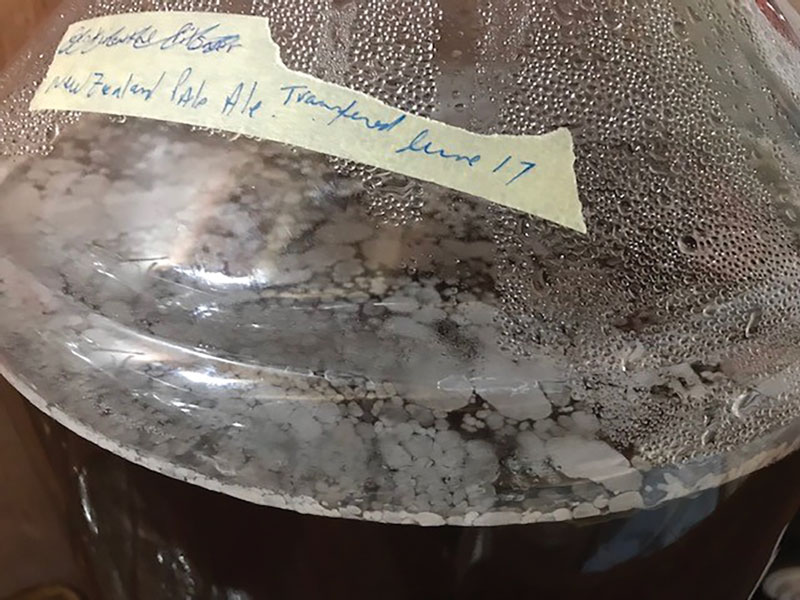Clues To Identifying An Infection
TroubleShooting
Roger Jacobs — Hamilton, Scotland asks,
Is it possible that you can help me identify this infection (see picture below)?

Identifying beer spoilage by visual observation can be a challenge, but the photo of your brew does look suspect. If I were to wager a bet, my money would be on Acetobacter for the win. Whatever is on the surface of your beer, it’s definitely not normal brewing yeast. Another common surface organism are Brettanomyces yeast species, but Brett pellicles usually have a different texture and appear more continuously across the surface once developed.
My guess about the identity of this does not really help you with your quest. You, however, should be able to do a bit of sleuthing with your nose. Acetobacter converts ethanol into acetic acid (vinegar) and its presence is often highlighted by elevated levels of ethyl acetate aromas, such as solvent, nail polish, and pear drops, as well as rope formation. Acetobacter are not the sort of spoilers that fall under the stealthy category of contaminants! Brettanomyces yeast, on the other hand, produce a different range of aromas from pleasant tropical fruit notes, to leather-like, barnyard aromas, to intense phenolics that are sometimes described as baby diaper. I call this the rosy, the funky, and the fugly.
The practical rule with this sort of brewing challenge is to use sensory to make a swift go or no-go assessment of the beer. Although it helps to have some prior experience in confidently rejecting a batch of contaminated beer, a bad batch of beer is usually hard to miss. If it smells really bad, tastes really bad, looks funky, and persists in this condition for a couple of weeks, it’s probably not going to get any better. In other words — dump it, clean it, and refill it to move on to better times ahead.
Commercial breweries are more analytical about contamination because understanding the root cause is important to stop the problem from spreading through the brewery. Classic microbiological methods are still common in brewing labs. These methods include the use of different types of growth media, colony morphology, anaerobic/aerobic environments, staining, and microscopic observation to identify the spoiling microorganisms. Many breweries, including a surprisingly large number of breweries producing fewer than a couple thousand barrels per year, use PCR (polymerase chain reaction) technology to detect and quantify beer spoilers.
Whether a brewer knows what has spoiled a batch of beer, it is always important to come up with some ideas on how the spoilage occurred so that future problems may be avoided. For the sake of discussion, assume that the photo of your problem brew does indeed show Acetobacter. This bug requires oxygen at the surface to effectively do its magic of converting ethanol into vinegar, and in combining ethanol and vinegar to produce ethyl acetate. A great way to deal with Acetobacter is to exclude air from the headspace of carboys and barrels. Try not to age beer in a primary vessel with lots of headspace for too long. Oxygen will find its way in over time.
Another great question to ask is how the bug found its way into your beer. Was it because of poor sanitation, a faulty piece of equipment that could not be properly cleaned, or was it from an ingredient addition after the boil? Microbiological problems can be difficult to definitively identify, yet they always remind brewers that organisms are everywhere in our world and some find beer a fairly hospitable environment.

